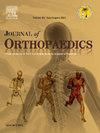Ensuring safety and optimization in total joint arthroplasty of cancer patients: A comprehensive analysis of complication risks and modifiable risk factors
IF 1.5
Q3 ORTHOPEDICS
引用次数: 0
Abstract
Aims & objectives
The primary objective of this study is to determine whether an active cancer diagnosis results in an increased risk of perioperative TJA complications and postoperative mortality. The secondary objective is to analyze the effects of demographic factors on perioperative complication rates in cancer patients undergoing TJA.
Materials & methods
Patients with active cancer diagnoses undergoing total joint arthroplasty from 2014 to 2020 were included in this retrospective analysis. Patient data was obtained through ReachNet, which consisted of data from the University Medical Center, Tulane University Medical Center, Ochsner Health System, and Baylor Scott & White Health. ICD-9/10 codes were tagged for active cancer diagnoses within 365 days before surgery or 30 days after surgery to establish our active cancer population. Acute surgical complications within 30 days were identified by ICD codes.
Results
Patient demographics included predominantly male (51.5 %), white (83 %), and non-Hispanic (96.5 %) patients followed by black individuals (15.9 %) with 47.5 % of patients being smokers. Cancer patients did have a higher acute complication rate (2.6 % vs 1.7 %), but this difference was not significant (p = .139). This difference was higher but also not significant after adjustment (aOR = 1.32, 95 % CI = 0.71–2.43, p = .377). After adjustment, increased Charlson Comorbidity Index (CCI), white race and non-elective surgery were significant contributors to complication risk. Complication rates decreased significantly with year. Nonelective surgeries were also associated with higher complication rates (8.2 % vs. 1.8 %, p = .014).
Conclusion
Patients with active cancer diagnoses demonstrated higher unadjusted rates of TJA acute surgical complications and increased adjusted CCI when compared to non-cancer patients. Identifying risk factors and demographics correlated with increased perioperative complications may provide physicians with necessary information to avoid negative TJA outcomes in cancer patients.
确保癌症患者全关节置换术的安全性和优化:并发症风险和可改变危险因素的综合分析。
目的和目的:本研究的主要目的是确定活动性癌症诊断是否会导致围手术期TJA并发症和术后死亡率的增加。次要目的是分析人口统计学因素对肿瘤患者TJA围手术期并发症发生率的影响。材料与方法:回顾性分析2014 - 2020年诊断为活动性肿瘤并行全关节置换术的患者。患者数据通过ReachNet获得,其中包括来自大学医学中心、杜兰大学医学中心、Ochsner健康系统和Baylor Scott & White健康中心的数据。对术前365天或术后30天内的活动性癌症诊断进行ICD-9/10代码标记,以确定我们的活动性癌症人群。通过ICD代码识别30天内的急性手术并发症。结果:患者人口统计主要包括男性(51.5%)、白人(83%)和非西班牙裔(96.5%)患者,其次是黑人(15.9%),其中47.5%的患者是吸烟者。癌症患者的急性并发症发生率较高(2.6% vs 1.7%),但差异不显著(p = 0.139)。调整后,这一差异更高,但也不显著(aOR = 1.32, 95% CI = 0.71-2.43, p = 0.377)。调整后,Charlson合并症指数(CCI)升高、白种人和非选择性手术是并发症风险的重要因素。并发症发生率随时间明显下降。非选择性手术也与较高的并发症发生率相关(8.2%对1.8%,p = 0.014)。结论:与非癌症患者相比,活动性癌症患者TJA急性手术并发症的未调整率更高,调整CCI也更高。确定与围手术期并发症增加相关的危险因素和人口统计学特征可以为医生提供必要的信息,以避免癌症患者TJA的负面结果。
本文章由计算机程序翻译,如有差异,请以英文原文为准。
求助全文
约1分钟内获得全文
求助全文
来源期刊

Journal of orthopaedics
ORTHOPEDICS-
CiteScore
3.50
自引率
6.70%
发文量
202
审稿时长
56 days
期刊介绍:
Journal of Orthopaedics aims to be a leading journal in orthopaedics and contribute towards the improvement of quality of orthopedic health care. The journal publishes original research work and review articles related to different aspects of orthopaedics including Arthroplasty, Arthroscopy, Sports Medicine, Trauma, Spine and Spinal deformities, Pediatric orthopaedics, limb reconstruction procedures, hand surgery, and orthopaedic oncology. It also publishes articles on continuing education, health-related information, case reports and letters to the editor. It is requested to note that the journal has an international readership and all submissions should be aimed at specifying something about the setting in which the work was conducted. Authors must also provide any specific reasons for the research and also provide an elaborate description of the results.
 求助内容:
求助内容: 应助结果提醒方式:
应助结果提醒方式:


